August 29, 2020
🎬 Happy Saturday! Next on “Axios on HBO”: At Eli Lilly HQ in Indianapolis, CEO David Ricks tells me what he thinks of pressure from President Trump to rush coronavirus treatments and cures. See a clip.
- Catch the full interview Monday at 11 p.m. ET/PT on all HBO platforms.
1 big thing: Dems fear protests help Trump
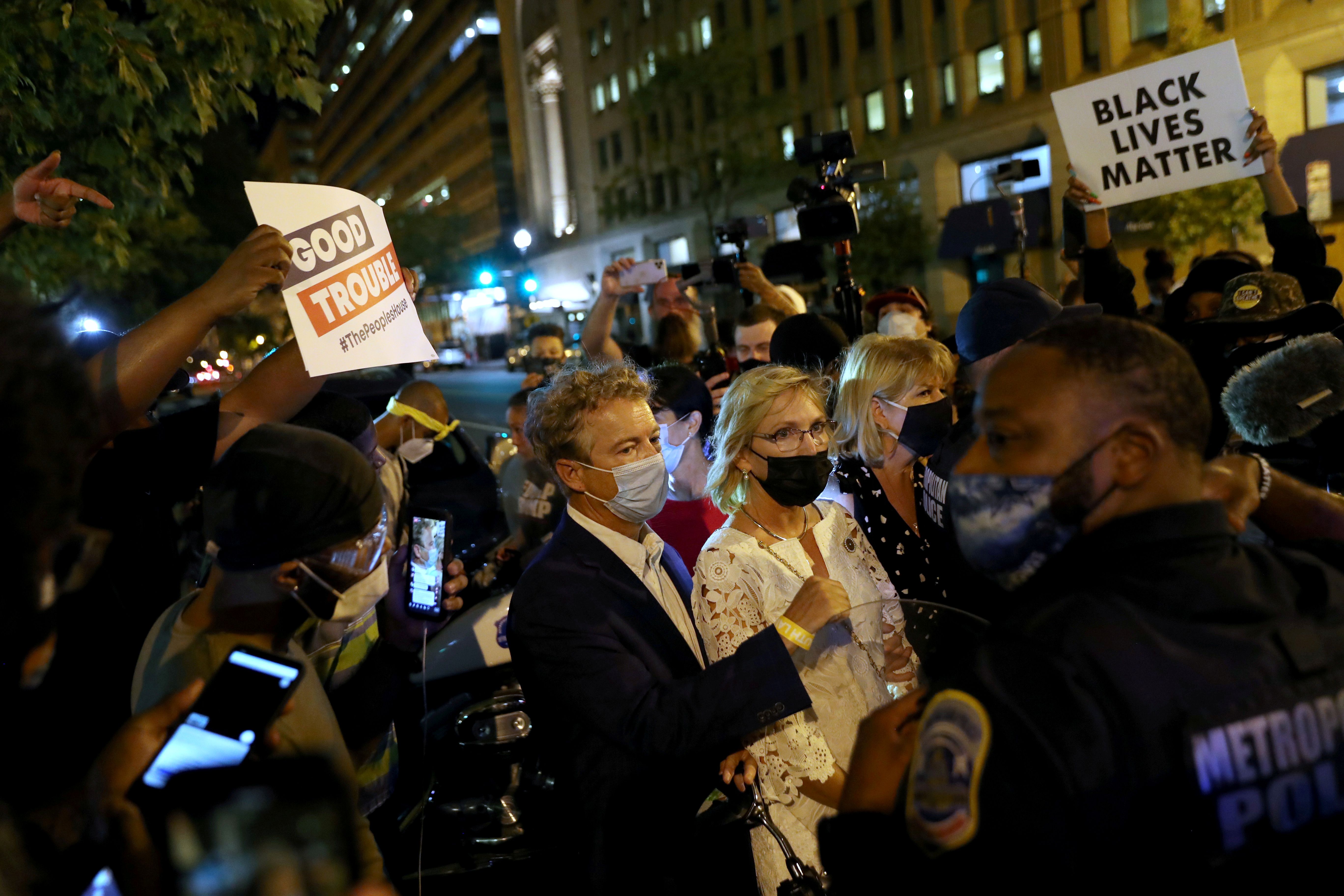
Democrats close to Joe Biden increasingly fear the looting and violence in cities could help President Trump, especially among the few undecided or wavering Americans.
- Why it matters: This is a huge story that helps explain the state of the race, with some Democrats panicking that Trump could win.
A new poll out of Wisconsin has heightened worry among top Democrats:
- In a Marquette Law School poll of registered voters in battleground Wisconsin, support for Black Lives Matters protests dropped 13 points from June to August, just ahead of the police shooting of Jacob Blake in Kenosha.
"There was an initial surge in support for and sympathy with BLM in June," Charles Franklin, director of the Marquette Law School Poll, told me.
- "The shift to a more negative view in August is strongest among Republicans, but independents and Democrats also became less approving. The decline was across all regions except for the city of Milwaukee."
At a rally last night in Manchester, N.H., the Trump campaign amplified the issue by handing out official signs saying "PEACEFUL PROTESTER" and "THIS IS A PEACEFUL PROTEST."
- "You know what I say? Protesters, your ass," Trump said. "I don't talk about my ass. They're not protesters. ... Those are anarchists. They're agitators. They're rioters. They're looters."
- "They don't even know who George Floyd is. If you ask 'em: 'Who's George Floyd?' they couldn't even tell you."
This video of Sen. Rand Paul (R-Ky.) and his wife, Kelley — being chased back to their hotel, shielded by police — has gotten more than 10 million views.
- Paul said on "Fox & Friends" that the attackers were yelling: "Say her name — Breonna Taylor," killed by police in a no-knock raid in Kentucky.
- "I'm actually the author of the [Justice for Breonna Taylor Act], to end no-knock raids," Paul said. "So the irony is lost on these idiots."
Andrew Sullivan writes, in "The Trap The Democrats Walked Right Into": "If law and order are what this election is about, they will lose it."
- "Biden needs a gesture of real Sister Souljah clarity to put daylight between him and the violent left."
The bottom line ... David Axelrod warned fellow Dems about Trump's effort to shift attention from COVID and unemployment to "law and order":
- "[T]he timing of unrest in Kenosha has been a gift to him in that project."
2. The science of stoking fear
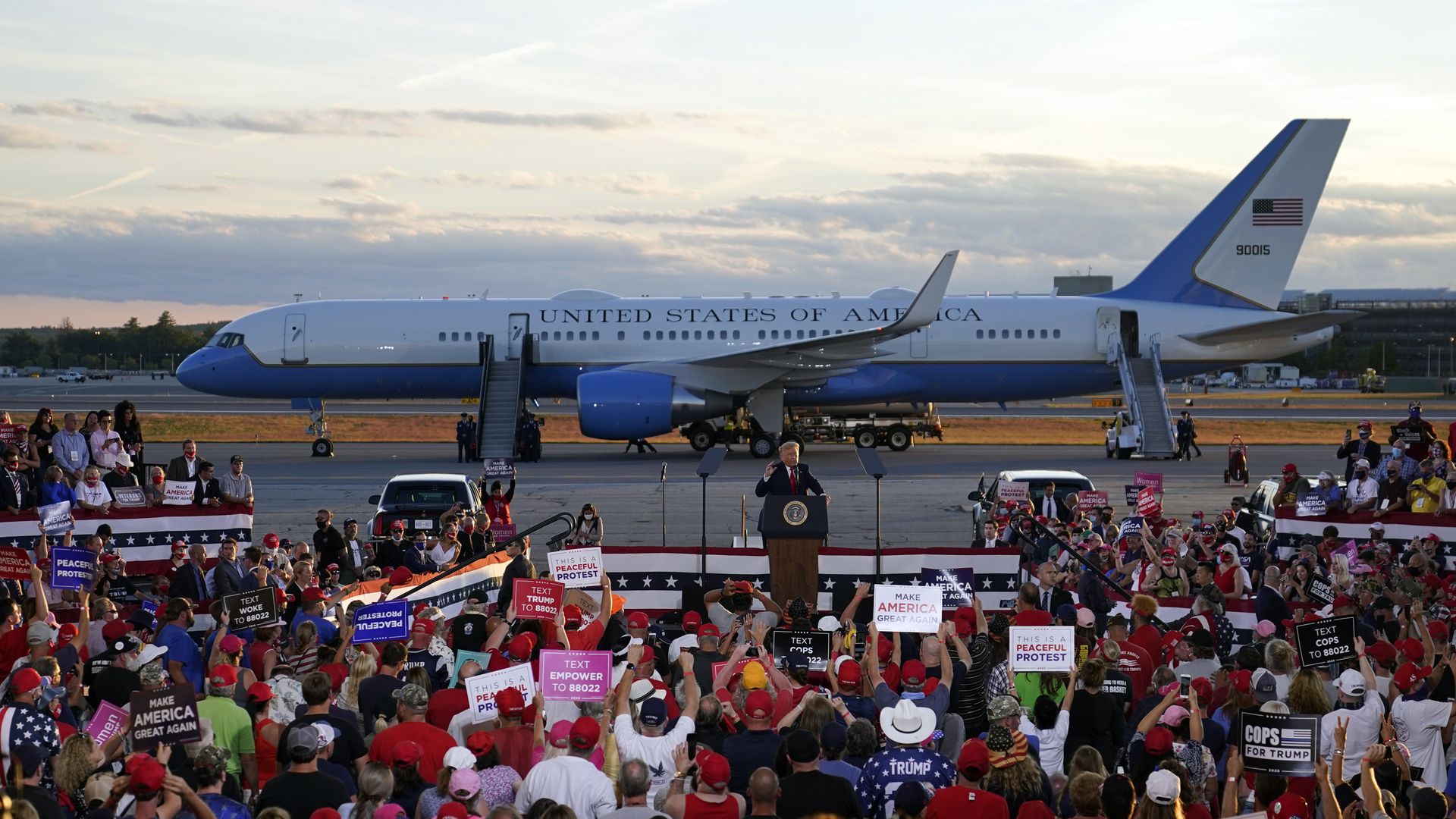
At a New Hampshire rally last night, the Trump campaign supplied signs saying "PEACEFUL PROTESTER" and "THIS IS A PEACEFUL PROTEST." Photo: Charles Krupa/AP
Corporations and advocacy groups have used fear to sell products and messages for decades, Axios markets reporter Courtenay Brown writes.
- Academics codified it as the "fear drive" method in the 1950s, referring to the idea that engaging with fear can be the motivation for people to buy into anything that would make the feeling of fear go away.
Punam Anand Keller, a Dartmouth College professor who's researched marketing and consumer behavior, says the tactic is everywhere — from the dentist warning of the severe health dangers if you don't floss, to commercials that lead with the dire consequences of drunk driving.
- "It only works when people believe in the fear arousing part of the message," Keller says. "For those people who don’t believe, then the message isn’t effective."
Constant "fears and scares," particularly in politics, make a lasting imprint says Barry Glassner, a sociologist and author of “The Culture of Fear."
- Glassner says fear-based messaging creates the same visceral, fight-or-flee response as coming upon a wild animal: Rational thinking gets much harder.
3. Chadwick Boseman fought cancer while filming "Black Panther"
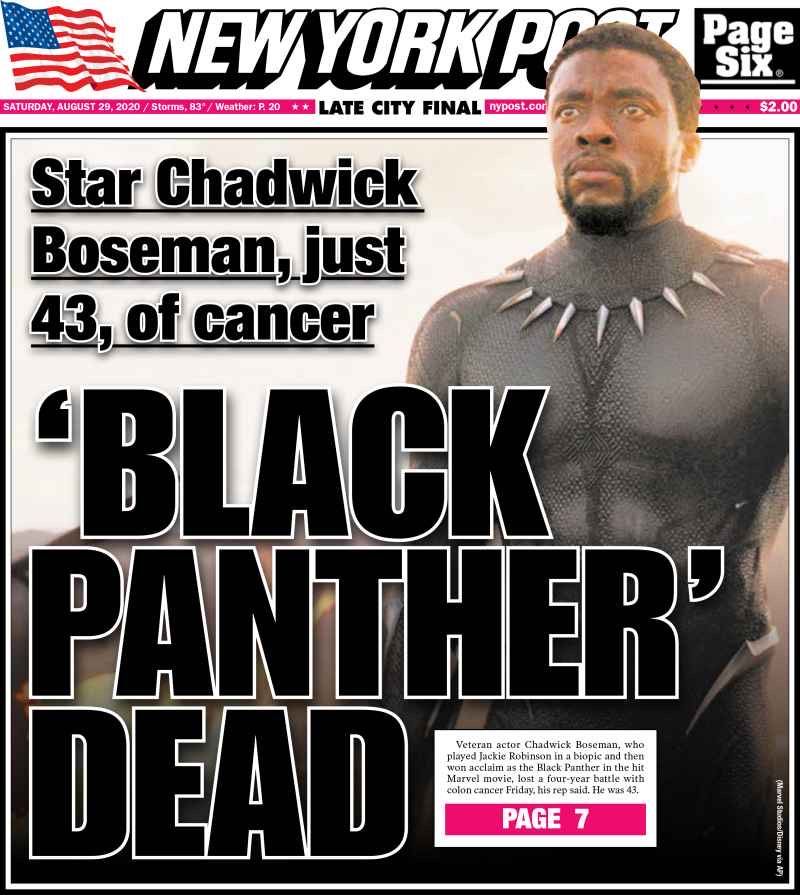
First Chadwick Boseman slipped on the cleats of Jackie Robinson, then the Godfather of Soul's dancing shoes, portraying both Black American icons with a searing intensity that commanded respect, AP's Ryan Pearson writes.
- When the former playwright suited up as Black Panther, he brought cool intellectual gravitas to the Marvel superhero's "Wakanda forever!" salute.
As his Hollywood career boomed, though, Boseman was privately undergoing "countless surgeries and chemotherapy" to battle colon cancer, his family said in a statement announcing his death yesterday at age 43.
- He'd been diagnosed at stage 3 in 2016 but never spoke publicly about it.
The cancer was there when his character T'Challa visited the ancestors' "astral plane" in "Black Panther," there when he first became a producer on the action thriller "21 Bridges," and there last summer when he shot an adaptation of a play by his hero August Wilson.
4. Pic du jour: March on Washington

Daria Allen and Tashi-Kali Acket cool off in the Lincoln Memorial Reflecting Pool during yesterday's march, organized by the Rev. Al Sharpton and the National Action Network.
- Families who have lost loved ones to police spoke on the steps of the Lincoln Memorial, on the 57th anniversary of the Rev. Martin Luther King Jr.'s March on Washington.
Go deeper: See more photos.
- Read the lead of Axios PM: Two generations of Kings speak about MLK's Dream.
5. Musk's Neuralink and the frontier of brain-computer interfaces
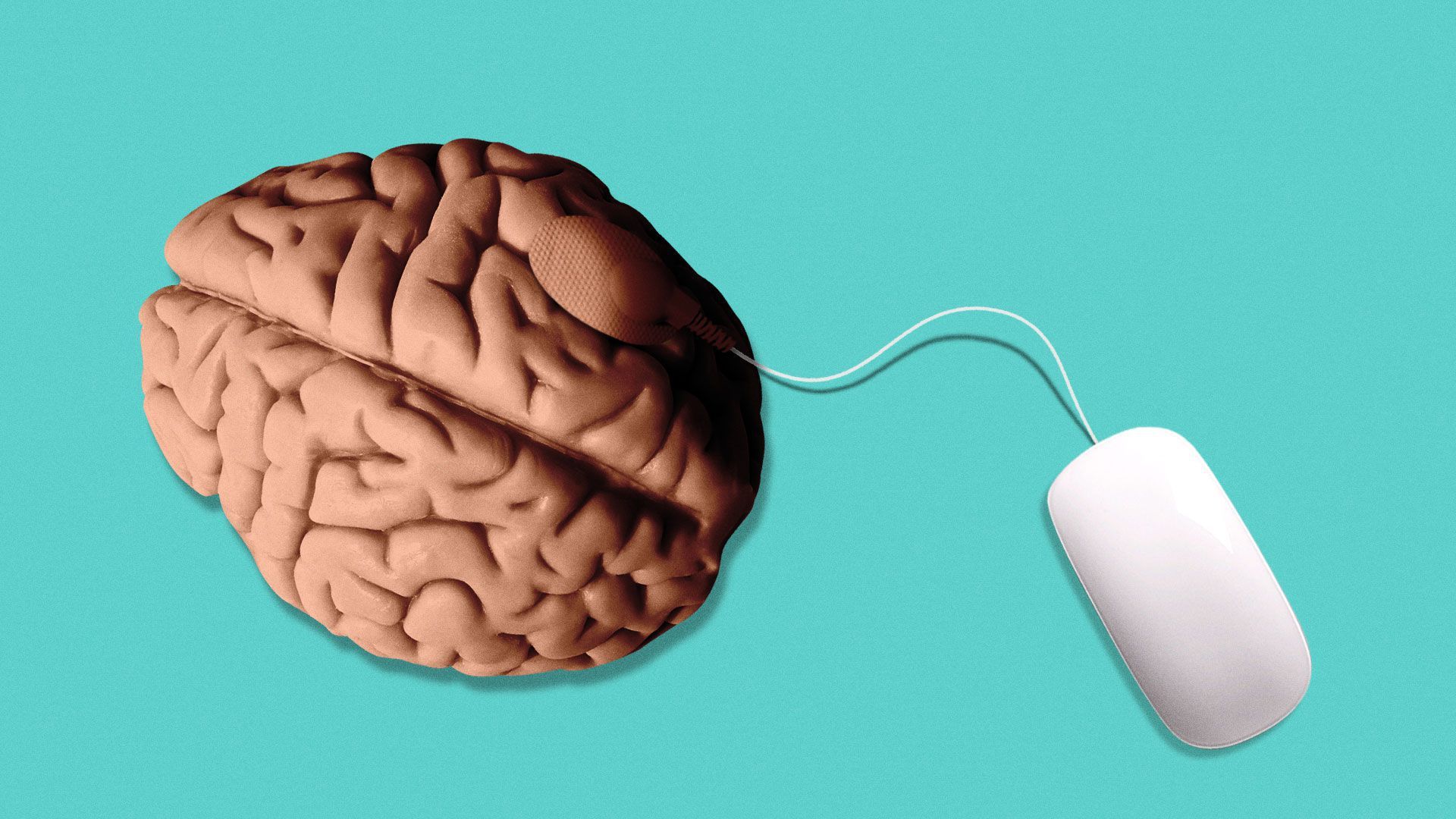
Illustration: Eniola Odetunde/Axios
Elon Musk gave the world a progress update on his brain-machine interface startup Neuralink, showcasing a small implant that can read and transmit the neural activity of a pig, Axios Future editor Bryan Walsh writes.
- "The future is gonna be weird," Musk said, wearing a black mask with a Neuralink logo. (YouTube)
Why it matters: The Neuralink implant still has yet to be tested in human beings, but it's part of a wave of brain-machine interface technologies that aim to address neurological diseases and injuries, and eventually directly link human brains to the internet.
In an online event, Musk showed the Neuralink device — roughly the size of a quarter — implanted in a pig's brain, where it was able to read some neural signals in real time.
- While Musk had billed the event as a "product demo," Neuralink has yet to undergo clinical trials in human beings, though the company announced it had been granted FDA "breakthrough device status," which could speed efforts in humans.
- "It's like a Fitbit in your skull with tiny wires," said Musk.
Today some version of neural implants are already used by tens of thousands of people around the world, mostly to treat neurological disorders like epilepsy and Parkinson's.
- The next generation of brain-computer interfaces (BCIs) seek to translate brain signals into useful data or even use them to manipulate machines.
- In 2017, Facebook announced that it wanted to create a headband that would allow people to type with just their thoughts.
The catch: For any of the more ambitious uses of BCI to become a reality, scientists will need to figure out how to implant connections in the brain that can last for a decade or longer. Most current versions corrode in a few years.
- Share this story.
- Sign up for Bryan Walsh's twice-weekly newsletter, Axios Future.
6. Tenants say they didn't know they'd be used in convention video
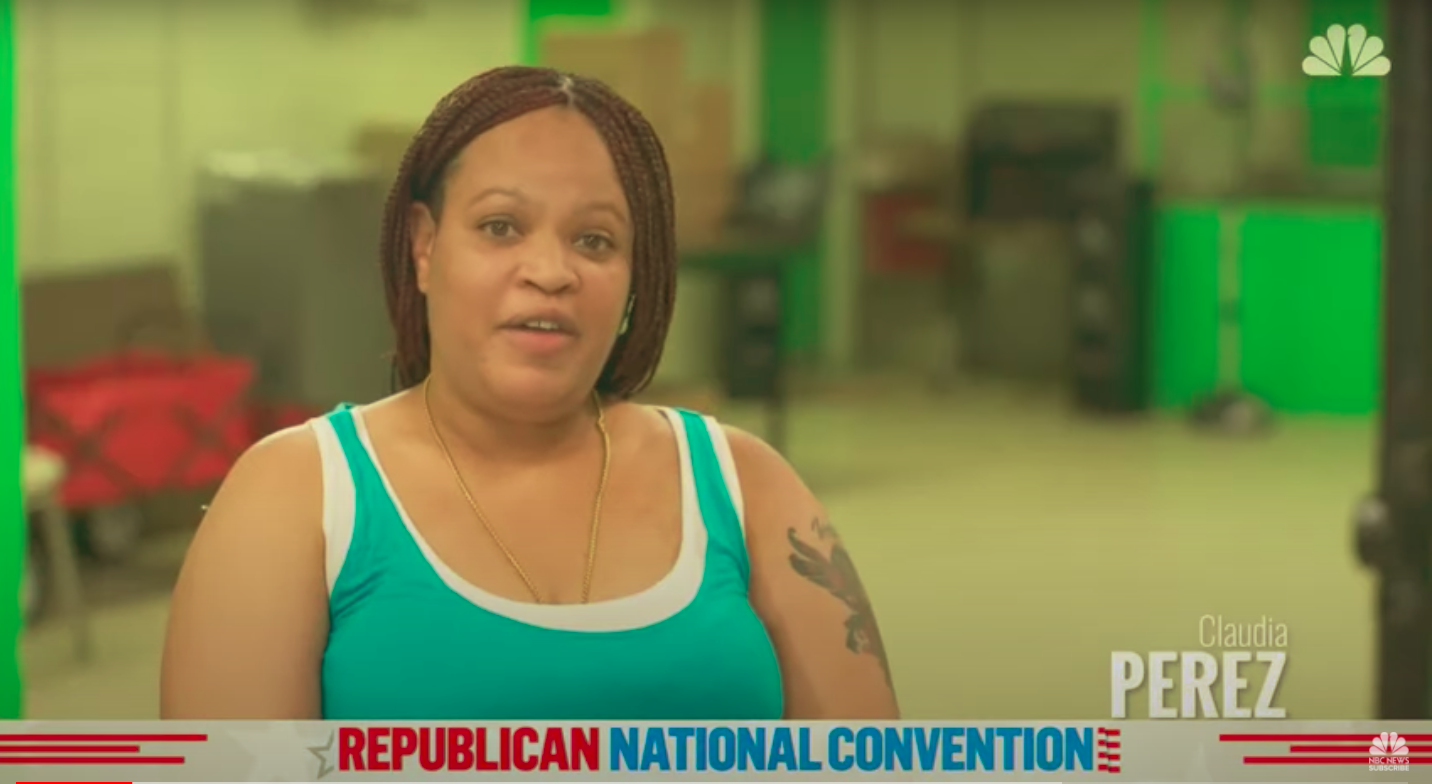
Three New York City public housing tenants, interviewed for a video bashing Mayor Bill de Blasio that aired Thursday during the Republican convention, told the N.Y. Times (subscription) they didn't know how it would be used.
- "I am not a Trump supporter," one of the tenants, Claudia Perez, told The Times. "I am a first-generation Honduran."
- The fourth tenant in the video "said she was a Trump backer and knew the purpose of the video."
Trump campaign communications director Tim Murtaugh told me: "All interview subjects were fully aware of the purpose of the interviews. ... They gave verbal consent on video tape."
🗽 Some participants in the naturalization ceremony shown during the convention told The Times and The Wall Street Journal they didn't know they'd be shown, but didn't mind — and some even enjoyed the instant fame.
7. Rahm: Biden needs a "metropolitan majority"
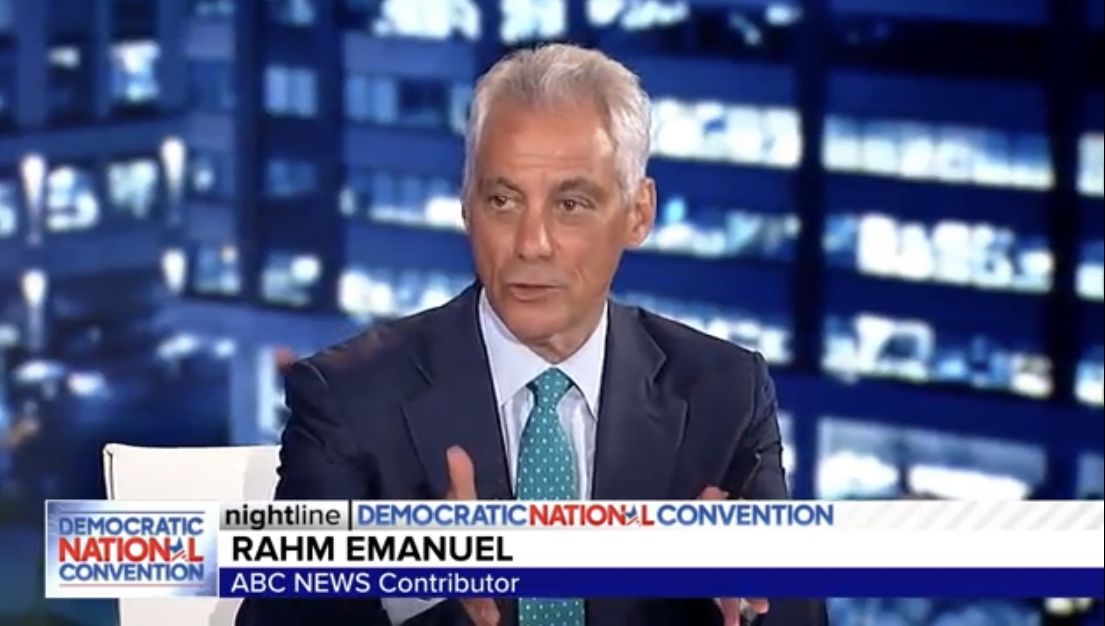
Rahm Emanuel writes in the Sunday WashPost: "President Trump is focused squarely on depth. ... He has purposefully worked to send Democrats into fits of rage because he knows nothing does more to delight the voters who cast ballots for him in 2016 and millions of similar voters who did not show up."
- "Joe Biden has embraced ... breadth. ... [T]he Democratic convention demonstrated Biden’s belief in building coalitions so diverse they would struggle to fit beneath a Barnum & Bailey big top."
Why it matters: "Biden’s challenge is to continue to broaden his coalition so that it negates the new voters Trump is able to excavate from the depths of his aggrieved base. Every decision the Biden campaign makes needs to be understood through that prism."
- "Biden will need a strong result from what I call the 'Metropolitan majority': voters in cities and suburbs."
8. Milestone: N.Y. Times cancels TV listings
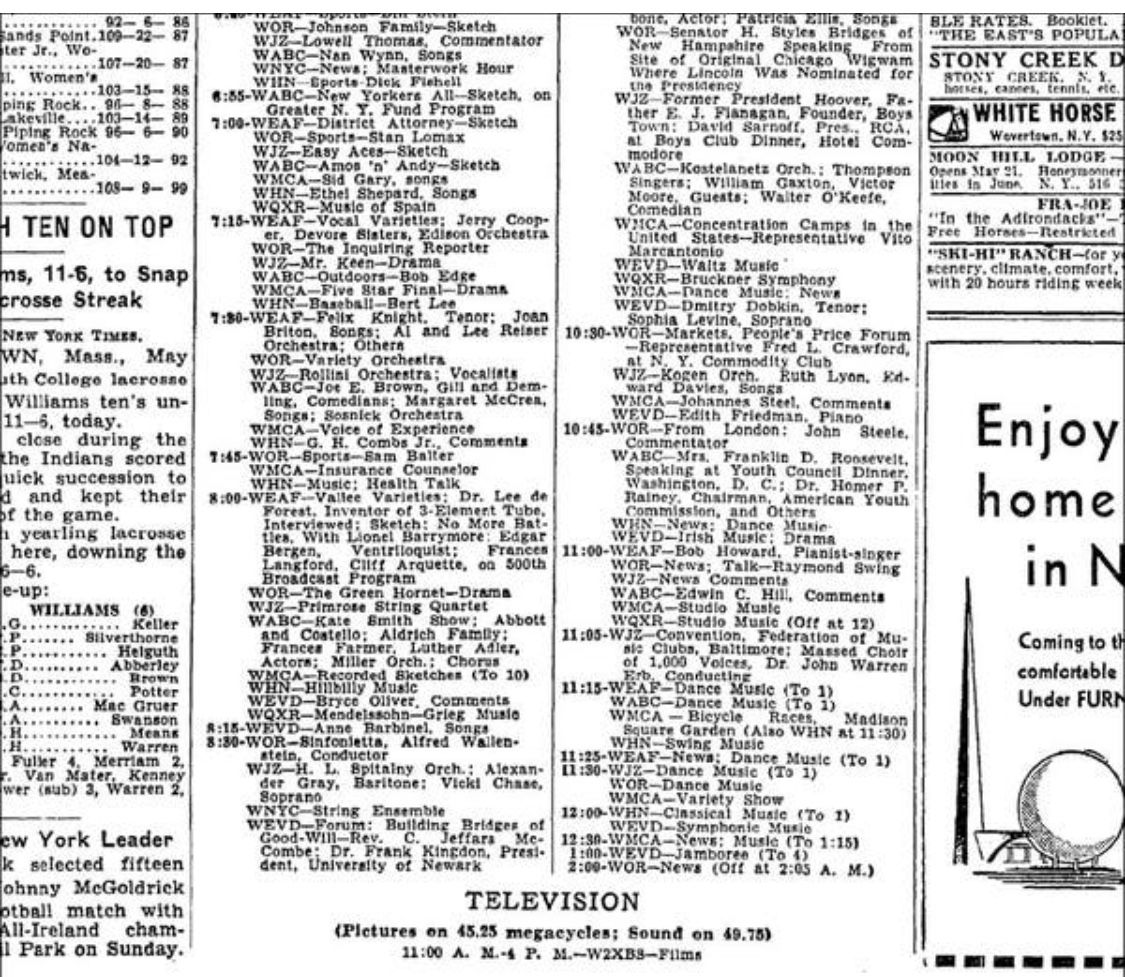
"After 81 years, this weekend will be the series finale for the daily television listings in the print editions of The New York Times," Sara Bahr writes in a "Times Insider" article.
- For years, The Times has published the grid only in New York, not in the National Edition.
Gilbert Cruz, The Times’s Culture editor, said: "We are firmly in the streaming age ... and the TV grid no longer reflects the way people consume television."
- Now some of the paper’s most popular TV articles are its regularly updated "The 50 Best Movies on Netflix Right Now" and "The 50 Best Things to Watch on Disney + Right Now" (subscription).
📱 Thanks for reading Axios AM. Please invite your friends to sign up here.